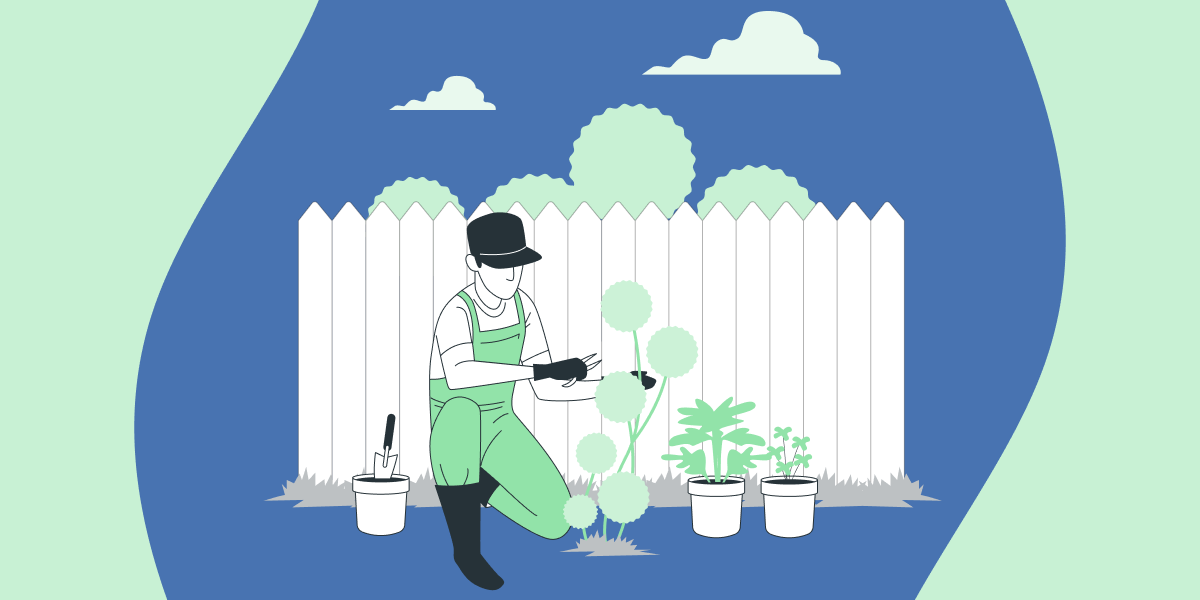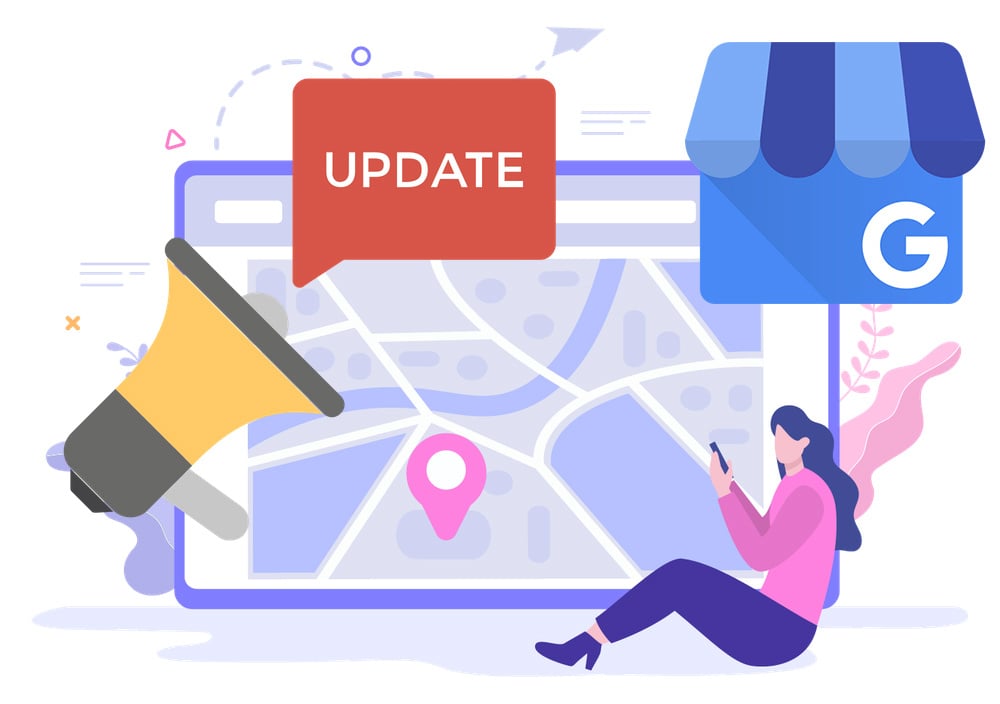2025 Is the Perfect Time to Start a Landscaping Business (Here's Why.)
The auto-detailing industry offers a lot of opportunities and business potential. Knowing the right tips and tricks can give you a headstart. Read on for more.

Gardening and yard projects boomed during the pandemic. Statista said it was the most popular home improvement project during Covid.
But now, homeowners are returning to in-person work, travel, and regular activities—and maintaining the yard has become more of an afterthought. After you add in the people who bought houses in 2022 when the market was still hot, you're likely to see more people seeking landscaping and groundskeeping services.

- Angi, a home services industry platform leader, found that although the elevated home service industry growth rates have slowed markedly, 2022 has brought it back to a more normal rate. That said, market size is still robust, and inflation has homeowners focused on home improvement rather than homebuying.
- Mordor Intelligence estimates a compound annual growth rate of 5.1% between 2022-2027 in the US landscaping market. However, a shortage of skilled labor in the industry could help boost business growth for existing landscaping companies.
- U.S. News ranks landscapers and groundskeepers as the number two best maintenance and repair jobs. They stated that landscaping and groundskeeping were above average for upward mobility, above average for flexibility, and low stress.

Source: Mordor Intelligence
This guide will break down the best areas for new or expanding landscaping businesses, popular services, trending technology and tools, and more.
Jump To:
-
The Bigger Landscaping Industry Picture
-
What to Look for When Finding an Area to Set Up A Business
-
Popular Landscaping and Groundskeeping Services
-
Landscaping and Groundskeeping Trends
-
Start Your Landscaping Business Today
-
In Conclusion

The Bigger Landscaping Industry Picture
“72% of consumers say a spacious yard would be at the top of their wish list if they were searching for a new home. Homeowners are more willing to invest in their yards and are using them for everyday activities, including work-from-home office space, according to the survey.” - Realtor Magazine, 2022
Yard projects and maintenance are a big undertaking. However, Realtor Magazine found that over three-quarters of U.S. homeowners with a yard said the outdoor family space is one of the most important parts of their home. People see numerous benefits when they have a well-designed yard. They…
- Have better curb appeal
- Can incorporate functional features, like drainage management/water runoff prevention, water conservation, water repurposing/recycling, windbreaks, natural fencing, food source, shade, beneficial insect attraction, and soil erosion prevention
- Improve their property’s value
When homeowners invest in landscaping services, they also…
- Save time
- Have less stress
- Gain expert insight into optimal design, plants, and features
Different regions create a variety of landscaping needs. The key to building and growing a business is to find an area where your skills and services are in demand.

Source: HGTV and Keeping Current Matters
Most Popular Metropolitan Areas for Landscaping Jobs
According to the Bureau of Labor Statistics (BLS), the top five metropolitan areas with the highest concentration of landscaping jobs are:
- Port St. Lucie, Florida
- Naples, Immokalee, Marco Island, Florida
- The Villages, Florida
- Kahului, Wailuku, Lahaina, Hawaii
- Barnstable Town, Massachusetts
In general, landscaping businesses do better in areas where people have yard space. You’re less likely to find ample jobs in heavily populated urban areas.
Top Paying States for Landscaping Businesses
The BLS shows that the top five states that pay landscapers the most are:
- District of Columbia
- Massachusetts
- Washington
- Vermont
- Connecticut
States with the Highest Level of Employment for Landscapers
The BLS lists the states with the highest level of landscaper employment as:
- California
- Florida
- Texas
- New York
- Illinois
Best States for Landscaping Businesses
Landscaping businesses can do well in many areas, however, Zippia created a 2022 list of the best states for landscapers. Zippia based the rankings on income, demand, and working conditions. The top ten states on the list included:
- Vermont
- Wyoming
- Nevada
- Minnesota
- Massachusetts
- Connecticut
- Washington
- Montana
- Maine
- California
Although lists and rankings for landscapers and income can act as a guide or starting point, there are other areas that are ideal for starting a landscaping business. Three key components of starting a successful business with growth potential are:
- Finding an area where you can fill a need.
- Offering the right services.
- Providing excellent customer service.
What to Look for When Finding an Area to Set Up A Business
A little research goes a long way in finding vital areas for landscaping businesses.
Start With Reviews
If you have areas of interest, search Google, Yelp, Angie’s List, or Thumbtack to see how many reviews landscaping businesses get and what services people are looking for. Try search terms like “landscapers in Portland,” or “St. Lucie County landscaping businesses.”
Look through the results to find out pricing, common customer needs, or what landscapers may not offer. Find a niche that sets you apart. For example, maybe you provide landscaping services to prepare a home for sale or have the ability to clear and grade.
If you notice that businesses in an area lack good reviews, there’s a potential to become the premiere 5-start local landscaping service.
Want MORE Jobs for your landscaping business? We can help! Click Here to Learn More.
Consider Yard or Outdoor Spaces
You can’t have a landscaping business in an area without outdoor spaces. You need homes with yards, businesses, or parks to design, build, and maintain. You want to find areas with plantings, trees, or grass.
Consider whether an area has a strong gardening community or HOA neighborhoods requiring yard maintenance. Suburban areas with upwardly mobile professionals may have an increased demand for home services.
Be realistic about location—a landscaper is more likely to succeed in Oregon than in Arizona simply because of the climate and growing capabilities. You’re also more likely to see lawns in Oregon than in the desert.
Investigate the Area’s Economy and What People Pay for Landscaping
A strong economy means locals can invest in-home services. Research average income, competitor pricing, and whether an area is strong economically. For example, does it have employers likely to withstand economic challenges?
Look at the cost of living and how much people are paying for landscaping services. Can a landscaper realistically live and work in an area? Are commute times reasonable? Is there enough work year-round?
Look For Niche Potential
Landscaping and groundskeeping services cover a wide range of needs. In a rural residential area, there may be a demand for brush clearing, removal of invasive plants, grading, or the ability to mow large areas. In a more suburban setting, the need might be lawn care, weeding, or hardscape installation.
The more ability there is to fine-tune services, the better. Look at each potential service area’s niche possibilities by exploring the area and looking at competitor services. Your goal should be offering services that provide consistent work.
Popular Landscaping and Groundskeeping Services
You can invest in the right equipment and labor by understanding what each service entails. Some of the most commonly seen landscaping and groundskeeping services are:
Landscape Design
Landscape design is looking at a yard or outdoor area, determining what a property owner wants, planning, layout, and installation of exterior spaces.
Lawn Care
Lawn care services include:
- Mowing
- Installation
- Protecting and feeding
- Edging
- Weed control
Regular Maintenance
Some properties may ask for regular maintenance, such as monthly or bi-monthly. This includes services like weeding, mowing, trimming, raking, fertilizing, and other regular tasks.
Seasonal Maintenance
In some areas, seasons determine services. For example, spring is often a time for weeding, bed care, and planting, while in the fall, you are more likely to see leaf blowing. Other common seasonal services are pest control, mulching, irrigation system maintenance, and repair.
You may also find the need for comprehensive seasonal services, like yard prep for home sales, or large yard makeovers in spring.
Pruning
Trees, shrubs, and hedges all require pruning. Landscapers can hone their pruning skills and even become specialized. For example, some landscapers train to prune ornamental trees like Japanese maples in the Pacific Northwest.
Mulching
Mulching has become a popular service because it has several benefits. Not only does it give a yard a fresh look, but it also helps with weed control, soil erosion, moisture retention, maintains soil nutrients, and helps controls pests.
Irrigation Installation
Irrigation systems save time, water, and money, and keep outdoor spaces looking their best with minimal effort. Irrigation can also add to overall property value.
Brush Clearing
Large properties may need brush clearing or the removal of invasive plants like blackberries, Scotch broom, or sagebrush. Landscapers that clear brush typically need bigger equipment, like tractors with the right attachments.
Grading
Grading serves several purposes, from optimizing drainage to prepping an area for planting or hardscape installation. It’s a more specialized service that requires large equipment and the skill to handle machinery.
Hardscape Installation
Hardscape refers to any hard material installed in a yard. This may include concrete, wood, gravel, stone, brick, or glass. It’s fencing, pavers, an outdoor kitchen—features that contrast but integrate with softscapes (plants, soil, etc.).
Water Feature Installation
Water features are ponds, streams, fountains, or waterfalls. They need reservoirs and pumps.
Landscaping and Groundskeeping Trends
People want home services that help them maintain the value of their property. Common trends in landscaping are:
Building Ongoing Relationships
There is a big push to develop long-term home service relationships. Customers want people they can trust and rely on. Since many view their yards as extensions of their home, they appreciate landscapers who can support their vision and help them design, install, or maintain a property they can use and one that looks beautiful.
You can build strong and ongoing relationships with your customers by:
- Listening
- Communicating
- Keeping them informed
- Staying authentic and transparent
- Making it easy to do business with you
- Offering exceptional customer service
Offering Eco-friendly and Sustainable Services
People are interested in conserving resources. Landscapers have many opportunities to help them implement sustainable practices into outdoor spaces.
Common practices and features are things like rain barrels, organic pest control, climate appropriate and/or native plantings, rain gardens, and sustainable lawns. A focus on sustainable design is often popular in areas that have experienced resource shortages.

Using Technology and Automation For Customer Convenience
Customers appreciate easy transactions and technology that makes scheduling, paying, and communicating effortless. Smart landscaping businesses implement platforms and software that lets them:
- Schedule services
- Send notifications
- Track and request reviews
- Respond to communications
- Take payments
- Automate responses
- Oversee marketing efforts
- Centralize important business data
Using technology that lets you do most of your business in one place is extremely beneficial. It saves you time and money and gives you business insights in one location.
Start Your Landscaping Business Today
The first thing you need to do is obtain proper licensing. From there:
Step 1: Research and choose your service area: Look for areas that need services for yards and other outdoor spaces that require care and maintenance.
Step 2: Choose your niche: What’s needed in your service area? What are your competitors doing? What skills and tools do you have? Get creative and research where you can uniquely fill a customer's need.
Step 3: Learn new skills and techniques: You may want to start your landscaping career by working for someone else or taking classes. As you continue to grow your business, continually upgrade your skills and add new ones. Invest in equipment that allows you to do your job more efficiently or on a bigger scale.
Step 4: Invest in tools: Even if you have to take out a small business loan, invest in the tools that will allow you to do your job effectively and efficiently. Although there is a wide range of services in the landscaping industry, some of the most common tools are:
- Vehicle
- Standard garden tools like shovels and rakes
- Mowers
- Trimmers
- Tractors and attachments
- Blowers
- Wheelbarrow
- Dump truck
- Trailer
- Pruners
Make sure to look into every supply you need to perform each service.
Step 5: Invest in tech tools: Look for a platform that supports small businesses and performs multiple functions. In addition, it should have good customer support and be easy to onboard.
Step 6: Determine pricing: Research the going rates in your area, what employees are paid, and set your prices competitively.
Step 7: Build a presence: Get creative in getting the word out there about your business. Use social media, flyers, cold calls, and networks.
Step 8: Provide exceptional customer service: When you offer standout service, you’re more likely to earn positive reviews and repeat customers. Your clients will also be more willing to spread the word.
In Conclusion
The landscaping and groundskeeping industry outlook is good. It also offers a fulfilling career with flexibility. If you can invest in the tools and skills needed, you can build a thriving business. Landscaping is a job that allows you to design, build, and maintain areas that people see as part of their homes.
%20(1)%20(1).png?width=340&name=Group%2012%20(2)%20(1)%20(1).png)



